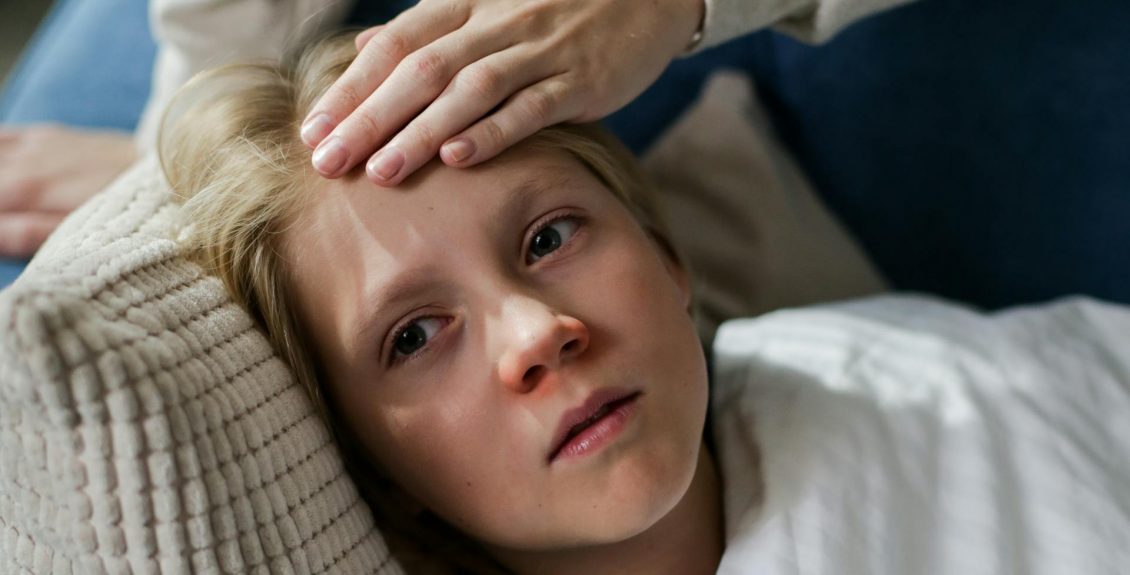Few things are more worrying as a parent than putting your hand on your child’s head only to feel them burning up. You may start worrying that they’re seriously unwell and may even have the urge to take them directly in for emergency care.
Luckily, while this concern is completely understandable, it isn’t always necessary. If your child is hot to the touch when they’re unwell, it could simply signify a fever, the body’s natural response to fighting infection. This is a common immune system response; mild fevers typically improve with simple at-home remedies. Even higher fevers normally resolve themselves, though your child may benefit from seeking urgent care in this instance.
Whether your child has a fever or you’re preparing for the next time they get one, knowing how to help and when to contact the professionals can help relieve your child and keep them safe.
Common Reasons Kids Develop Fevers
As mentioned, fevers are completely natural immune responses to infection. In fact, a fever is a sign that your child’s body is doing exactly what it should do to keep itself safe and fight off those nasty germs!
Children tend to experience fevers for a wide range of reasons, which can include:
- Viral infections: Many viral infections could cause your child to have a fever, including common colds and flu, RSV, and other infections like chickenpox.
- Bacterial infections: Bacterial infections can also cause fevers and may include ear infections, urinary tract infections (UTIs), pneumonia, and strep throat.
- Other potential causes: Sometimes, a fever can be present even without an active illness. This is especially common if your child has recently received a vaccination or is dealing with issues like teething. Sunburn or heatstroke can also sometimes result in fevers.
In these cases, a fever will typically clear with the illness or issue that’s causing it, showing that there’s no need to worry. However, in rare cases, fevers can also indicate more serious underlying conditions that require medical attention. This may be the case if a fever is persistent, unusually high, or develops after unusual activities like traveling.
When to Monitor Vs. When to Act
While no parent likes to think of their child suffering, making your child comfortable at home and monitoring them closely is often the best thing you can do for a fever. This is especially true if your child’s fever is within a “normal” range of 101-102° F. Ideally, you’ll want to see that fever starting to break within two or three days, and your child will have hopefully made a full recovery within approximately five days of care.
Does this mean you should never worry about a fever? Not necessarily. While fevers are rarely dangerous, letting your child become too hot or developing other symptoms alongside a fever may indicate the need for medical attention. Things to look out for include:
- A high fever above 102°F
- Difficulty breathing
- Dehydration
- Excess vomiting
- Dry eyes or sunken lips
- Rashes
- Seizures
You should seek professional advice if you notice any of these signs. Following your intuition is also key; if your child seems unresponsive or unlike themselves during a fever, it’s probably best to get them checked out.
Ways to Manage Your Child’s Fever at Home
Instead of rushing to pack a hospital bag you most likely don’t need, you can help your child best by knowing how to manage their fever and make them comfortable at home.
Great at-home ideas for managing a fever include staying on top of hydration and encouraging your child to get plenty of rest. Anti-fever medications like acetaminophen and ibuprofen can also be helpful when given in age/weight-appropriate doses at recommended intervals.
While you may want to bundle up a child shivering with a fever, you should avoid doing this, as it’s more likely to lead to overheating. Instead, try to maintain a normal temperature by focusing on room ventilation and using only lightweight clothing and blankets.
Generally speaking, you don’t need to do anything to cool your child’s temperature, but lukewarm baths could help relieve discomfort when given alongside medicine. However, always avoid giving cold or icy baths, as these will only worsen the symptoms of a fever.
When to Visit Just 4 Kids Urgent Care
Most of the time, a fever doesn’t require further care, but there are some instances when you should seek professional help, like the pediatric urgent care we provide here at Just 4 Kids. This is the case if your child has:
- Persistent high fevers: You should bring your child to Just 4 Kids if they’ve had a persistently high fever for five days or more.
- Concerning symptoms: If your child has a fever alongside symptoms like rashes, severe pain, or difficulty breathing, it’s always best to get them checked out.
- Fever in babies under three months old: Any fever can be serious in a baby under three months old. Be sure to visit Just 4 Kids even if your newborn has a low fever.
We provide fever relief for kids at our three urgent care clinics, located in Chubbuck, Idaho Falls, and Rexburg. When you arrive, one of our pediatric providers will evaluate your child for underlying causes, including the flu, conjunctivitis, ear infections, and more. We’ll then provide treatment and guidance regarding how to manage the fever once you get home.
Fever Relief for Kids in Eastern Idaho
Fevers don’t often require professional oversight, but if you’re worried about your child or you’ve tried these at-home solutions with no success, listen to your intuition and contact Just 4 Kids in Eastern Idaho.
Our experienced team is on hand to help you understand what could be causing your child’s fever and how to treat it moving forward. Stop by or call us today to address your concerns about your child’s fever.
